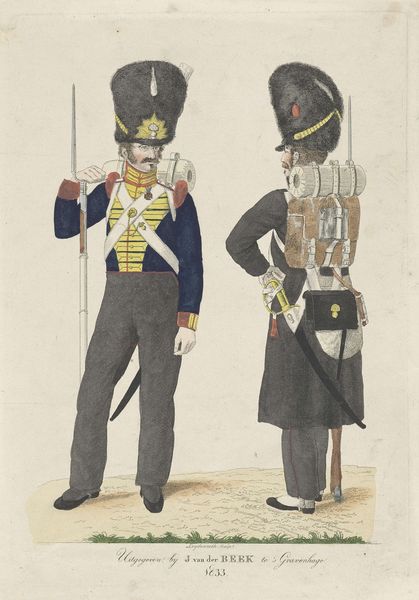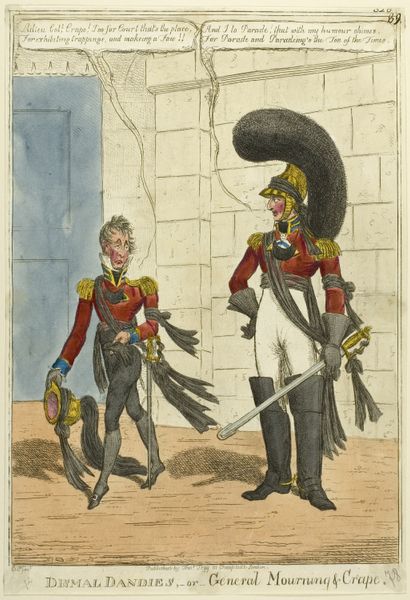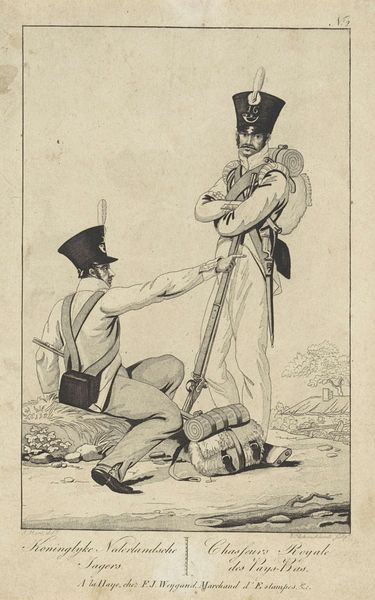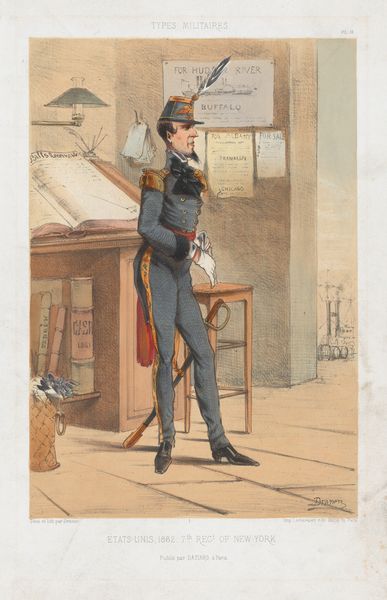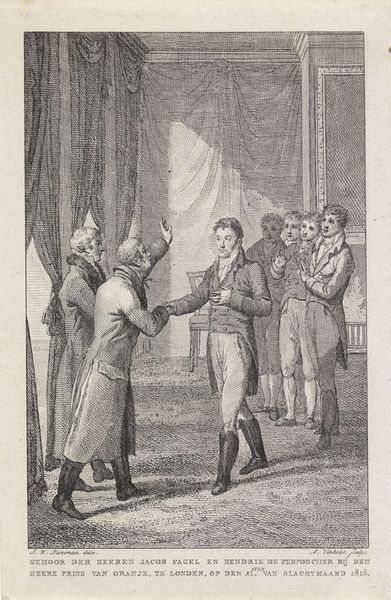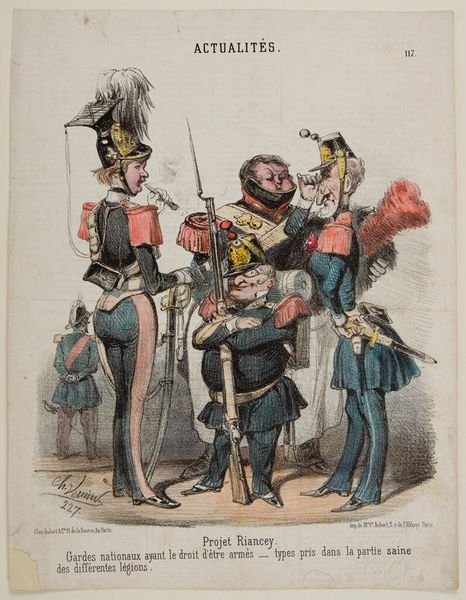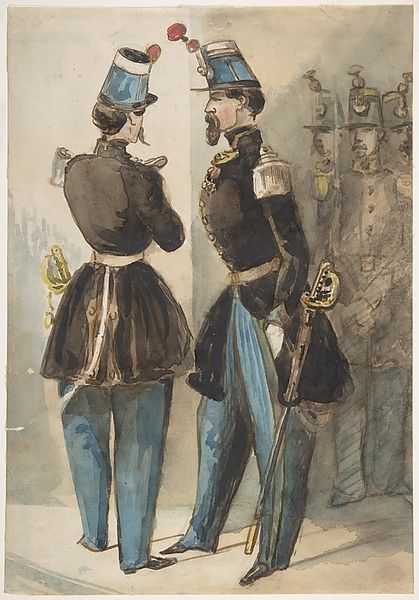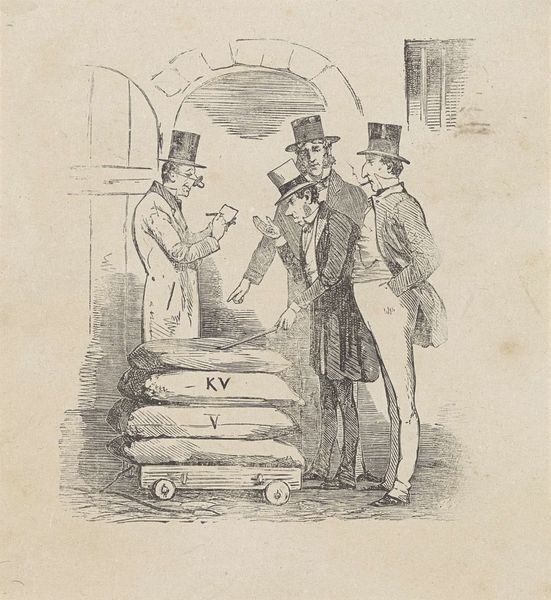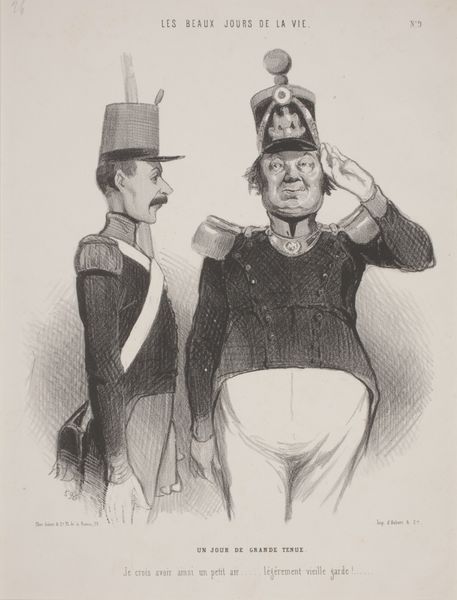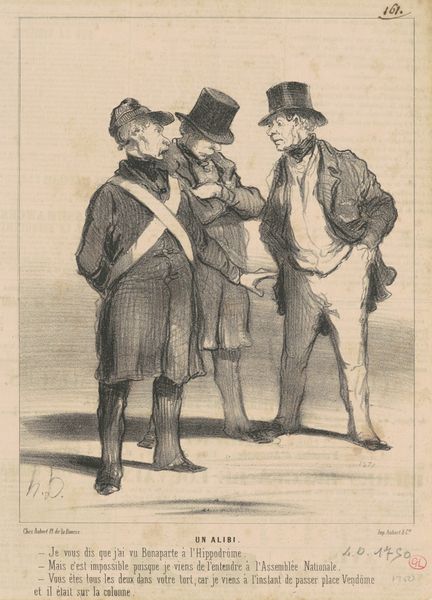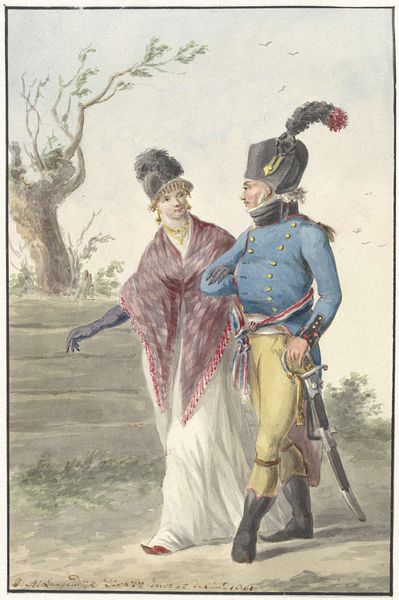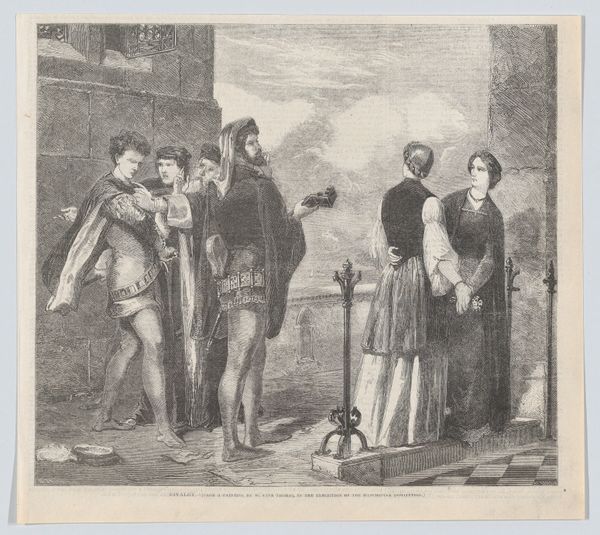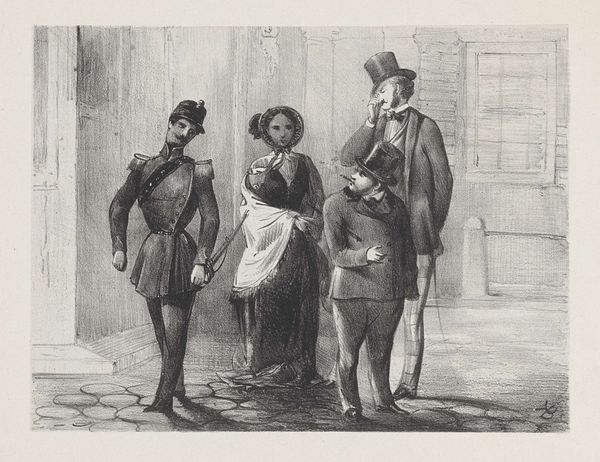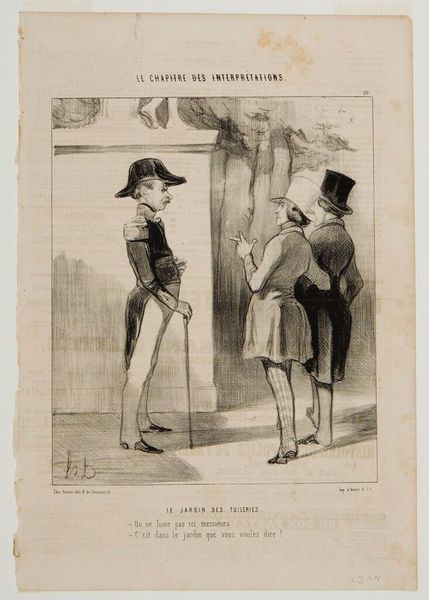
painting
#
portrait
#
painting
#
oil painting
#
romanticism
#
genre-painting
#
history-painting
#
portrait art
Copyright: Public domain
Curator: Albrecht Adam created "Kamie\u0144), Paka\u0161 Manor. Captive Officer" in 1812. The piece portrays a scene with officers, capturing a moment of military life during the early 19th century. Editor: The first impression is somber. The restrained color palette and rigid poses evoke a sense of formality and perhaps the gravity of the depicted situation. Curator: Precisely. Consider the historical context—1812. Europe was deep in the Napoleonic Wars. Adam, as a historical painter, frequently depicted military campaigns. This genre piece is imbued with the complex dynamics of power, particularly between captors and the captured. Editor: Let's consider the formal elements. The linear quality is prominent. Observe how the soldiers on the left present a solid diagonal form, almost a barrier, leading us to the isolated figure on the right. Note how this structure divides the canvas, accentuating the theme. Curator: I would say this division reflects the social and political divisions of the time. Military hierarchies were deeply ingrained, and here we see not just the victor and the vanquished, but also the ever-present class divisions signified by the ornate and well-kept uniforms, emblems of identity within systems of power. Editor: Absolutely. We should analyze the clothing. Uniforms carry layers of visual language that instantly suggest narratives and assign roles to their wearers. We cannot underestimate their capacity to signal status, affiliation, and much more. Curator: Moreover, gender itself becomes implicated here, given the hyper-masculine, patriarchal contexts from which the military operates, influencing ideas of dominance and subservience within societies broadly, particularly during eras defined by empire-building and aggressive expansionism. Editor: A detailed reading of semiotics, through uniforms and postures, highlights a discourse on power through Adam’s art, revealing layers that connect technique with philosophy. Curator: Ultimately, this work functions as a lens to consider the intersecting themes of identity, power, and social division during a transformative era in European history, particularly when reading across intersectional perspectives. Editor: An analysis like this reinforces our sense that close observation offers rewards for understanding the intricate network of representation.
Comments
No comments
Be the first to comment and join the conversation on the ultimate creative platform.
